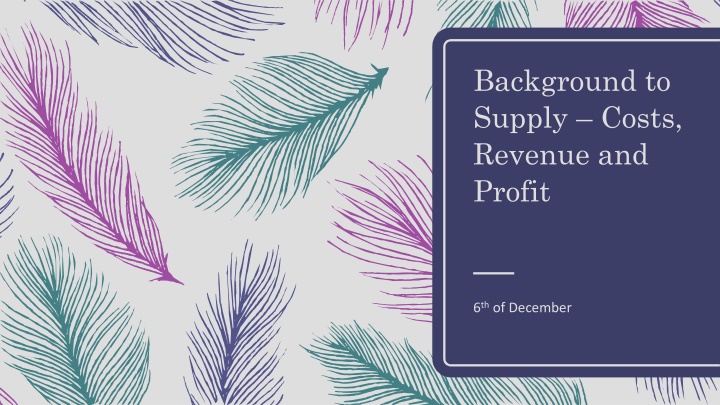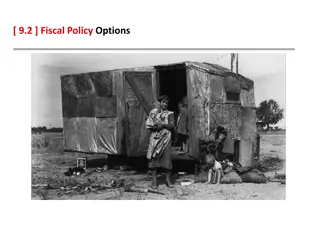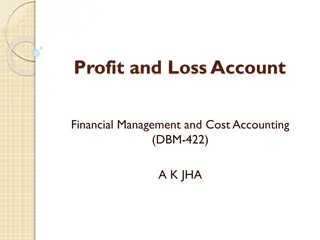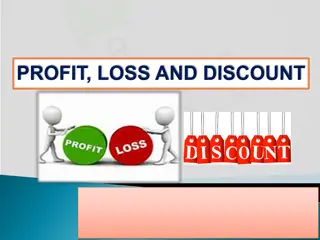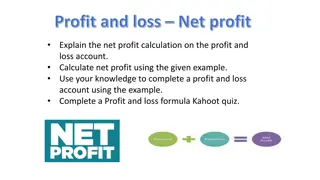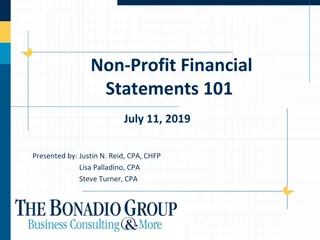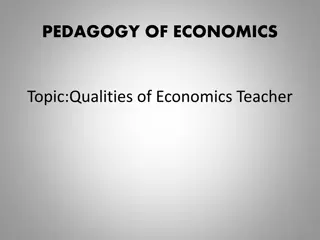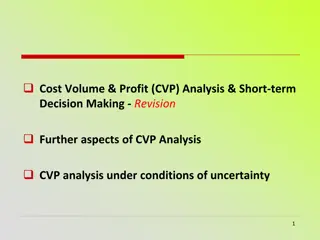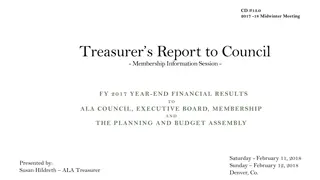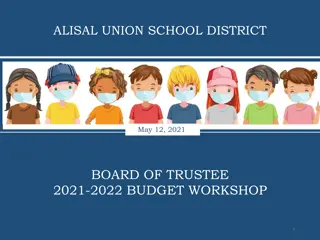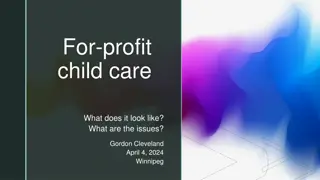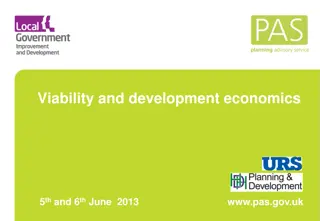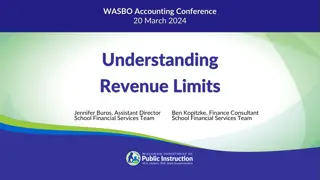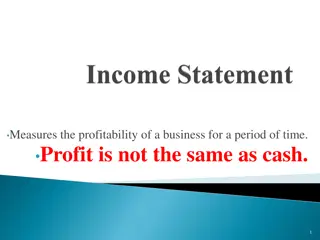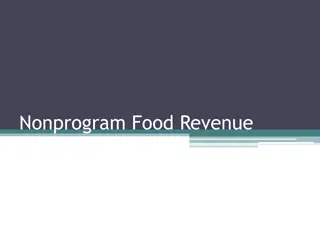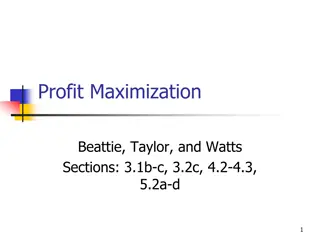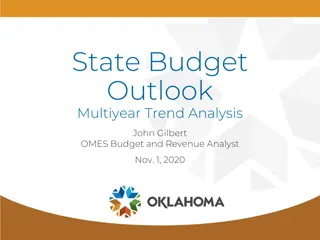Costs, Revenue, and Profit in Economics
Cost is the expenditure on goods or services, including opportunity cost. It can be explicit or implicit. Measuring opportunity cost involves factors of production and sacrifices. Economic profit considers opportunity cost while accounting profit does not. Production in the short run depends on input amounts and prices. Decisions should focus on variable costs, not sunk costs.
Uploaded on Sep 17, 2024 | 0 Views
Download Presentation

Please find below an Image/Link to download the presentation.
The content on the website is provided AS IS for your information and personal use only. It may not be sold, licensed, or shared on other websites without obtaining consent from the author.If you encounter any issues during the download, it is possible that the publisher has removed the file from their server.
You are allowed to download the files provided on this website for personal or commercial use, subject to the condition that they are used lawfully. All files are the property of their respective owners.
The content on the website is provided AS IS for your information and personal use only. It may not be sold, licensed, or shared on other websites without obtaining consent from the author.
E N D
Presentation Transcript
Background to Supply Costs, Revenue and Profit 6thof December
Costs, revenue and profit Topics to be covered: The meaning of cost Production in the short-run: the law of diminishing returns Short-run production function Costs in the short-run Production in the long run Relationship between sales revenue and output Revenue, output and revenue Elasticity and revenue Profit maximisation short-run long-run Shut-down point
Meaning of Cost Cost is the money spent by a firm to produce goods or services Example: labour cost, material cost, machinery cost Opportunity costs Often cost is measured in terms of opportunity cost Opportunity cost is the cost of any activity measured in terms of the next best alternative (opportunity) foregone. Example: producing 10 small cars instead of 6 large cars with same amount of input (opportunity cost of producing 1 small car is 0.6 of a large car).
Measuring opportunity cost Measuring opportunity cost: What factors of production the firm uses Cost (sacrifice) involved in using them Explicit cost and implicit cost Explicit costs: Costs involved with the production of goods or services that require a direct payment of money to a third party, e.g., electricity bill, labour cost. Implicit costs: Costs which do not involve a direct payment of money to a third party, but nevertheless involve a sacrifice of some alternative e.g., cost of machinery, building etc. not owned by the firm.
35 30 Profit 25 10 20 20 Implicit Cost 15 10 30 10 Explicit Cost 5 10 10 0 Economic Profit Total Revenue Accounting Profit
Measuring opportunity cost Measuring opportunity cost: If there is no alternative use of an input and if it has not scrap value, the opportunity cost of using it is zero. Costs not considered as opportunity cost: Historic costs original purchase price of an asset Fixed costs not important in short-run decision making (referred to as sunk cost). Bygones principle: the sunk (fixed) costs should be ignored when deciding whether to produce or sell more or less of a product. Only variable cost should be considered. Replacement cost ( something needs to pay in the future)
Production in the Short run Production functions factors of production labour land and raw materials capital entrepreneurship the cost of producing any level of output will depend on the amounts of inputs used and the price that the firm pay for them.
Production in the Short run Short-run : short-run is a time period during which the cost of at least one factor of production is fixed. Long-run: all costs are variable The actual length of short-run will differ from firm to firm. It is not a fixed period of time. The law of diminishing return: decrease in marginal production as the amount of a single factor of production is incrementally increased.
The short-run production function Production function: relationship between input and output Total physical product (TPP): total output produced in a given period of time. Average physical product (APP): output per unit of variable factor marginal physical product (MPP): extra output produced by employing one more variable factor the graphical relationship between TPP, APP and MPP
Wheat production per year from a particular farm Number of workers 0 1 2 3 4 5 6 7 8 40 TPP 0 3 10 24 36 40 42 42 40 Tonnes of wheat produced per year 30 20 10 0 0 1 2 3 4 5 6 7 8 Number of farm workers
Wheat production per year from a particular farm Number of workers 0 1 2 3 4 5 6 7 8 40 TPP 0 3 10 24 36 40 42 42 40 Tonnes of wheat produced per year 30 20 10 0 0 1 2 3 4 5 6 7 8 Number of farm workers
Wheat production per year from a particular farm Tonnes of wheat per year 40 TPP 30 20 10 Number of farm workers (L) 0 0 1 2 3 4 5 6 7 8 14 Tonnes of wheat per year 12 10 8 6 4 2 Number of farm workers (L) 0 0 1 2 3 4 5 6 7 8 -2 MPP
Wheat production per year from a particular farm Tonnes of wheat per year 40 TPP 30 b 20 Diminishing returns set in here. 10 Number of farm workers (L) 0 0 1 2 3 4 5 6 7 8 b 14 Tonnes of wheat per year 12 10 8 6 APP 4 2 Number of farm workers (L) 0 0 1 2 3 4 5 6 7 8 -2 MPP
Wheat production per year from a particular farm d Tonnes of wheat per year 40 TPP 30 Maximum output b 20 10 Number of farm workers (L) 0 0 1 2 3 4 5 6 7 8 b 14 Tonnes of wheat per year 12 10 8 6 APP 4 2 d Number of farm workers (L) 0 0 1 2 3 4 5 6 7 8 -2 MPP
Q If the marginal physical product (MPP) is above the average physical product (APP): A. the MPP must be falling. B. the MPP must be rising. C. the APP must be falling. D. the APP must be rising. E. the APP could be either rising or falling depending on whether the MPP is rising or falling.
Costs in the Short run Fixed costs and variable costs Total costs total fixed cost (TFC): total fixed cost does not vary with output. total variable cost (TVC) Variable cost per unit of output X Number output produced total cost (TC = TFC + TVC)
Total costs for firm X TVC ( ) TC ( ) Output (Q) TFC ( ) TC TVC 100 0 1 2 3 4 5 6 7 0 10 16 21 28 40 60 91 12 22 28 33 40 52 72 103 12 12 12 12 12 12 12 12 80 60 40 20 TFC 0 0 1 2 3 4 5 6 7 8
Costs in the Short run Average cost average fixed cost (TFC/Q) average variable cost (TVC/Q) average (total) cost (TC/Q) = AFC + AVC Marginal cost = TC/ Q
Total, average and marginal cost for Firm X Output (Q) (units) 0 TFC AFC (TFC/Q) ( ) TVC AVC (TVC/Q) ( ) TC AC MC (TFC+TVC) ( ) 12 (TC/Q) ( ) ( TC/ Q) ( ) ( ) 12 ( ) 0 10 1 12 12 10 10 22 22 6 2 12 6 16 8 28 14 5 3 12 4 21 7 33 11 7 4 12 3 28 7 40 10 12 5 12 2.4 40 8 52 10.4 20 6 12 2 60 10 72 12 31 7 12 1.7 91 13 103 14.7
Average and marginal costs MC AC AVC Costs ( ) z y x AFC Output (Q)
Production in the Long run All factors are variable in long run Planning in the long-run involves decisions on : Scale of its production o economies of scale when increasing the scale of production leads to lower cost per unit of output. constant returns to scale: percentage increase in input will lead to the same percentage increase in output. increasing returns to scale: output grows at a higher rate than the growth in input decreasing returns to scale: Output grows at a lower rate.
Alternative long-run average cost curves Constant costs Costs LRAC O Output
A typical long-run average cost curve LRAC Costs O Output
A typical long-run average cost curve Economies of scale Constant costs Diseconomies of scale LRAC Costs O Output
Deriving long-run average cost curves: factories of fixed size SRAC5 SRAC1 SRAC2 SRAC4 SRAC3 5 factories Costs 1 factory 2 factories 4 factories 3 factories O Output
Deriving long-run average cost curves: factories of fixed size SRAC5 SRAC1 SRAC2 SRAC4 SRAC3 LRAC Costs O Output
Deriving a long-run average cost curve: choice of factory size Costs Examples of short-run average cost curves O Output
Deriving a long-run average cost curve: choice of factory size LRAC Costs O Output
Exam Questions The costs that are influenced by output in the short run are Select one: A. total fixed costs only. B. total costs only. C. total variable costs only. D. both total variable costs and total costs. E. Start up costs
Question 2 Economies of scale exist when A. doubling the amount of labour more than doubles the amount of output. B. any of the conditions under A or C occur. C. doubling the amount of capital more than doubles total output. D. increasing the scale of production leads to a lower cost per unit output. E. any of the conditions under B or C occur
Question 3 If the total product of two workers is 80 and the total product of three workers is 90, then the average product of the third worker is ________ and the marginal product of the third worker is ________. Select one: A. 30; 10 B. 10; 3.33 C. 3.33; 10 D. 10; 30 E. 160; 270
Revenue Defining total, average and marginal revenue Total revenue (TR): firm s total earnings from the sale of particular amount of output (Q) in a period of time. TR = Price (P) Q Average revenue(AR): average amount the firm earns per unit sold. AR = TR/Q Marginal revenue (MR): The extra revenue gained by selling one or more unit per time period. MR = TR/ Q
Revenue Price taker: A firm that is too small to be able to influence market price. A price taking firm faces horizontal demand curve at the market price Average revenue curve for a single firm therefore lies along exactly the same line of its demand curve. Marginal revenue curve will be the same as the average revenue curve For a price taking firm D=AR=MR
Deriving a firms AR and MR: price-taking firm Price ( ) AR, MR ( ) S D = AR = MR Pe D O O Q (millions) Q (hundreds) (a) The market (b) The firm
Total revenue for a price-taking firm TR Price = AR = MR ( ) TR ( ) Quantity (units) 6000 0 5 5 5 5 5 5 5 0 5000 200 400 600 800 1000 1200 1000 2000 3000 4000 5000 6000 4000 TR ( ) 3000 2000 1000 0 0 200 400 600 800 1000 1200 Quantity
Revenue curve for price chooser Price maker (price chooser) : Firm has a relatively large share of the market. Firm has the ability to influence the price charged for its good or service. A price maker firm faces a downward-sloping demand curve In order to sell more, it must lower the price A price rise will reduce sale What happens to AR, MR and TR?
AR and MR curves for a firm facing a downward-slopingdemand curve Q TR ( ) MR ( ) P =AR ( ) 8 7 6 5 4 3 2 8 (units) 1 2 3 4 5 6 7 8 6 4 2 0 14 18 20 20 18 14 6 -2 -4 4 AR, MR ( ) 2 AR 0 Quantity 1 2 3 4 5 6 7 -2 MR -4
TR curve for a firm facing a downward-sloping D curve 20 16 TR Quantity (units) P = AR ( ) TR ( ) 12 TR ( ) 1 2 3 4 5 6 7 8 7 6 5 4 3 2 8 14 18 20 20 18 14 8 4 0 0 1 2 3 4 5 6 7 Quantity
Marginal revenue and price elasticity of demand If demand is price elastic, a decrease in price will lead to a proportionally larger increase in quantity demanded and hence and increase in revenue; Positive marginal revenue If demand is price inelastic, a decrease in price will lead to a proportionally smaller increase in quantity demanded and hence and decrease in revenue; Negative marginal revenue
AR and MR curves for a firm facing a downward-slopingdemand curve 8 Elastic Elasticity = -1 6 4 AR, MR ( ) Inelastic 2 AR 0 Quantity 1 2 3 4 5 6 7 -2 MR -4
Shifts in revenue curve A change in any other determinants of demand, such as, tastes, income or the price of other goods, will shift the demand curve. These changes will cause shift in all three revenue curves Revenue curve shifts upward to reflect an increase in revenue and shifts downwards to reflect decrease in revenue.
Cost and revenue :profit maximisation Firms strive through in maximizing profit Managers are interested to know the output level at which profit is maximized Two approaches to determine profit maximisation level of output: Total approach = total revenue total cost Marginal approach = marginal revenue marginal cost
Revenue, cost and profit for Firm X P = AR ( ) 9 TR ( ) 0 MR ( ) TC ( ) 6 AC ( ) MC ( ) T ( ) 6 A ( ) Q (units) 0 8 4 1 8 8 10 10 2 2 6 2 2 7 14 12 6 2 1 4 2 42/3 11/3 3 6 18 14 4 2 4 41/2 1/2 4 5 20 18 2 0 7 5 4 20 25 5 5 1 11 2 6 3 18 36 6 18 3 20 4 7 2 14 56 8 42 6
Finding maximum profit using total curves TC 24 22 20 d 18 16 TR, TC, T ( ) 14 TR e 12 10 8 6 f 4 2 0 Quantity -2 1 2 3 4 5 6 7 -4 -6 T -8
Profit Maximisation Using total curves maximising the difference between TR & TC the total profit curve Using marginal and average curves stage 1: profit is maximised at the quantity where MR = MC
Finding the profit-maximising output using marginal curves 16 MC 12 Costs and revenue ( ) 8 Profit-maximising output 4 e 0 1 2 3 4 5 6 7 Quantity MR -4
Profit Maximisation Using total curves maximising the difference between TR & TC the total profit curve Using marginal and average curves stage 1: profit is maximised at the quantity where MR = MC stage 2: using AR and ACcurves to measure the size of the profit (and the product s price)
Measuring the maximum profit using average curves 16 MC Total profit = 1.50 x 3 = 4.50 12 Costs and revenue ( ) Profits maximised at the output where MC = MR AC 8 a 6.00 4.50 T O T A L P R O F I T b 4 AR 0 1 2 3 4 5 6 7 Quantity MR -4
Profit Maximisation long-run profit maximisation Long-run profits will be maximised at the output where MR equals the long-run MC. Meaning of profit The minimum return that the owners must make on their capital in order to prevent close down. Normal profit: the opportunity cost of being in business Economic profit: the excess of profit over normal profit Loss-minimising output : Output where MR=MC
Loss-minimising output MC AC Costs and revenue ( ) AC LOSS AR AR O Q Quantity MR
